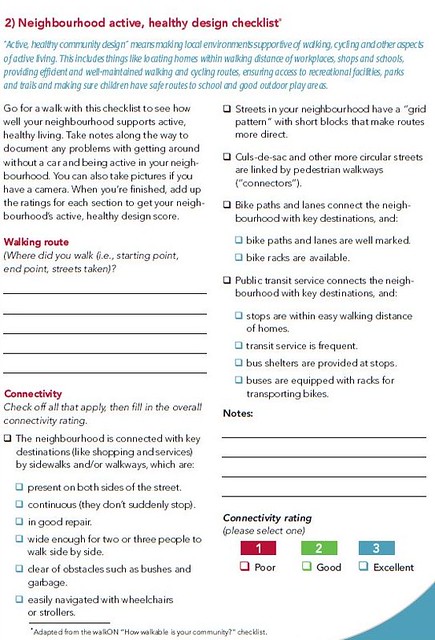Interesting planning initiatives/research in Toronto
 1. The City of Toronto, like Montreal and other cities, has an extensive underground tunnel-connections network, linking building basements and sub-basements to the subway system.
1. The City of Toronto, like Montreal and other cities, has an extensive underground tunnel-connections network, linking building basements and sub-basements to the subway system. Thinking about this study and the issues in DC, I don't think that there is consensus within the city about adding density in commercial districts (avenues in the parlance of the Toronto study) to accommodate opportunities for growth.
I think the biggest failure of the Comp Plan revision process (2004-2006) was not following up the approval of the plan with a public outreach process, to explain the intent, and build a consensus for the kinds of development, transportation, and other proscriptions outlined in the plan.
- cf. How Does the City Grow from Toronto City Planning Division
From the article:
Studies have shown that areas ... with well-connected streets and a high density of intersections, promote exercise among adults, who are more likely to walk or cycle to work or the green grocer.
But a recent study by Janssen and other Queen’s researchers suggests high street connectivity has the opposite effect on children. That’s because dense, busy neighbourhoods aren’t as conducive to unsupervised play or kids roaming up and down sidewalks on rollerblades or scooters.
“Where houses are crammed, yards are small and there’s more traffic, there may be no place for kids to play,” says Janssen. “Whereas if you have a quiet cul-de-sac it becomes a playground.” Those zones can become hotbeds for road hockey, dodgeball and skipping ropes.
The report, published in the International Journal of Environmental Research and Public Health, used data from a 2006 survey of school-aged children from grades 6 through 10 (ages 11 to 15). It looked at the physical activity patterns of 8,535 students from 180 schools across Canada, and then compared it to the 5-kilometre area surrounding each school.
The study found that youth in the neighbourhoods of highest density and most connectivity between streets were less likely to be physically active outside school.
Many factors determine how much exercise children get, including access to organized sports, whether parents can afford them and family attitudes regarding fitness. However, the Queen’s research was noteworthy because it demonstrated how street connectivity appears to have opposite effects on adults and kids.
Rate your neighborhood
• Are homes connected to stores and services by sidewalks and/or walkways?
• Are there sidewalks on both sides of the street? Are they continuous, in good repair, and wide enough for strollers or more than one person?
• Do streets form a grid pattern with short blocks that make routes more direct?
• Are culs-de-sac and circular streets linked by walkways?
• Are there bike paths and lanes to key destinations?
• Are public transit stops in easy walking distance? Is service frequent? Are there bus shelters?
• Are homes in walking distance of stores, services, schools, parks, recreational facilities and workplaces?
• Is there a mix of residential, business, stores and schools?
• Is there a mix of housing such as apartments, townhomes, single family dwellings?
• Are walking routes attractive and well maintained?
• Are routes not broken up by too many vacant spaces like parking lots or empty buildings?
• Are there benches or other resting places along the way?
The Mississauga Summit, scheduled for Tuesday night, is the fourth in an ongoing series that began in 2007 and is modelled after Greater Toronto’s CivicAction — a way to engage residents by having them contribute their own plans.
The event, held at the University of Toronto Mississauga, with an appearance by Calgary Mayor Naheed Nenshi, was to feature five “big ideas” whittled down from an original 18. The five are: waterfront, diversity, human services (health and social services), post-secondary education and jobs.
The point, said co-chair Shelley White, is to let the people decide what’s next for the growing and diverse community. Over the past two years, summit organizers struck up five task forces comprised of businesses, non-profits, government and citizens who volunteered their time to draw up a vision for Mississauga’s future. “Government can’t be expected to do it all,” said White, president and CEO of United Way Peel Region.
7. The MaRS Centre (Medical and Related Sciences) in Toronto's Discovery District is focused on developing science and technology businesses and entrepreneurship development. They've had 1,200 clients since 2006.
Labels: urban design/placemaking




0 Comments:
Post a Comment
<< Home